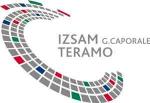Bluetongue vaccination in Europe
Expert Review of Vaccines publish this investigation article
September 1st, 2010
Bluetongue virus (BTV) is the cause of blue¬tongue (BT), an insect-transmitted disease of domestic and wild ruminants. BTV infection occurs throughout many of the temperate and tropical regions of the world, coincident with the distribution of specific species of Culicoides biting midges that act as biological vectors of the virus. BT typi¬cally occurs when susceptible animal spe¬cies are introduced into areas where virulent strains of BTV circulate, or when virulent strains of BTV extend their range into previ¬ously unexposed populations of ruminants. Following the recent northern European epidemic, BTV has spread far beyond the historical northern limits of its range.
Bluetongue virus is the prototype member of the genus Orbivirus, family Reoviridae. As a reovirus, it has a seg¬mented genome of dsRNA and a charac¬teristic virion morphology and structure. On the basis of serotype-specific virus neutralization assays, 24 distinct serotypes of BTV have been described to date, but a virus isolated from goats in Switzerland (Toggenburg virus) is probably a 25th sero¬type. Between 1998 and 2006, five dif¬ferent BTV serotypes (1, 2, 4, 9 and 16) spread throughout extensive portions of Mediterranean Europe. In 2006, BTV serotype 8 (BTV-8) emerged unexpectedly in the North of Europe, affecting Belgium, France, Germany, Luxembourg and the Netherlands. In 2007, BTV-8 spread rapidly and widely throughout much of Europe, as to a lesser extent did BTV-1. In 2008, two other BTV serotypes were detected in Northern Europe: BTV-6 in the Netherlands and BTV-11 in Belgium.
The European incursion of BTV has had a considerable negative economic impact, partly due to direct losses from mortality and reduced production in affected live¬stock but, more importantly, as a result of the ban of ruminant trade between BTV-infected and noninfected areas. To limit direct losses and in an effort to min¬imize the circulation of BTV and allow safe movements of animals, authorities from affected European countries under¬took vaccination of livestock according to their individual national policies, the geographic distribution of the incurring BTV serotype(s), and the availability of appropriate vaccines.
Before 2005, only modified live virus (MLV) vaccines were used in these national BTV vaccination campaigns and, with the exception of Italy where all susceptible domestic ruminant species were vaccinated, only sheep were vacci¬nated . After 2005, when inactivated vaccines became available, cattle and goats were also vaccinated.
The types of BTV vaccines that have been developed include inactivated whole- (killed) virus preparations, virus-like particles (VLPs) produced from recombinant baculoviruses, modified-live (attenuated) virus vaccines and recombinant vac¬cinia or canarypox or capripox virus-vectored vaccines. All have inherent potential advantages and disadvantages, but only MLVs and some inactivated vaccines are currently available for use in European community-approved national disease control programs. VLPs and vectored vaccines are also safe and have been shown to be efficacious in laboratory trials, but their efficacy in the field still is under evaluation
Zientara S., MacLachlan NJ., Calistri P., Sanchez-Vizcaino JM. and Savini G.
 | Servicio de Inmunología Viral y Medicina Preventiva (SUAT). Centro de Vigilancia Sanitaria Veterinaria (VISAVET). Universidad Complutense (UCM). |
 | Departamento de Sanidad Animal. Facultad de Veterinaria. Universidad Complutense (UCM). |
| AFSSA—LERMVD. | |
| Department of Pathology, Microbiology and Immunology. School of Veterinary Medicine. University of California-Davis (UCDAVIS). | |
 | Istituto Zooprofilattico Sperimentale dell Abruzzo e del Molise (IZSAM). |
| World Organisation for Animal Health (WOAH). | |
